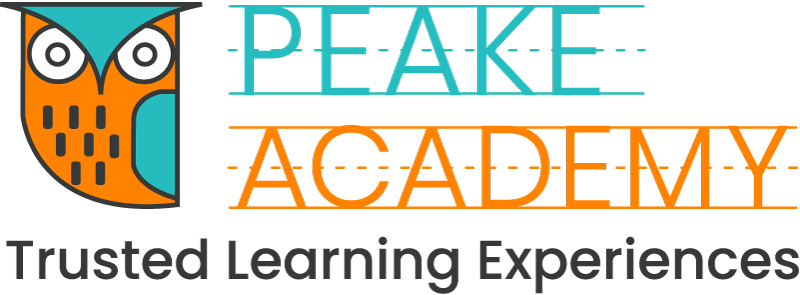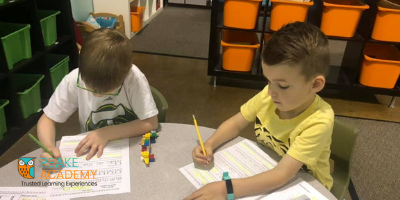Teaching My Child to Read and Write
Right from the very start, you want the best for your child. The best support, the best education, and the best experiences. Sometimes it seems like parenting is a quest to figure out what to do and when to do the things that will ensure that your child gets the best that you can offer.
Today we’re going to discuss some tips to help parents teach their children to read and write. This is one of the easier parts of child-raising that you can control. You’re the one who will help form a love of reading within your child from day one and here is how to get started with teaching your child to read.
Teaching Your Child To Read
Teaching your child to read is a very simple process. Surprised? Puzzled? Most parents are. Reading seems like such a complex set of skills. How can we be a part of making it happen without expert assistance from educators?
Only one preschool and early-years activity predict later success in reading. That activity is “being read to by parents.” Research into early literacy and reading has repeatedly found that children who are read to by their parents daily are the best readers during the elementary years.
When you read to your child, you are introducing him/her to the function of the written word. Young children are learning that letters make words and words have meaning. This is the first lesson in reading and writing. So get out a book, and read!
Tips for Reading To your Toddler
Focus on Visuals
In the beginning, don’t read. Point!
Name objects while you point to pictures on the page. Reading pictures is an important pre-reading skill that your child will perfect first. Later, your child will realize that words and pictures are really the same.
Be Dramatic
Put life into your reading. Vary your voice tone. Give voices to different pictures and
characters. Have fun! Make reading enjoyable.
Start With Easy Board Picture Books
Start with easy-to-read, bright, and simple picture books. In most cases, you needn’t bother with the text until your child can sit through looking at the pictures of the whole book. Then abbreviate the text, keep it simple, and move quickly to keep your child’s interest.
Follow Along with Finger
Move your finger across the page to show that reading is taking place. This helps your child learn left to right progression _ a key pre-reading skill.
Point out Familiar Things while Reading
Pointing out familiar things first – eyes, animals, mother, daddy, baby, and car – that are part of your child’s experience will keep your child’s attention. Gradually add unfamiliar pictures and words as you reread the book.
Hold Toddler’s Attention
Don’t stay on one page too long. Four seconds is about long enough for very young children unless your child wants to stay longer. For now, limit your reading to one page at a time. But over time, start to connect one page with the next, so your child will see the relationship between characters or objects on subsequent pages.
Use Different Books
Start with books that can be used for different purposes. For example, if an ABC book has animals that are associated with letters (like b for bears), use the book to explore the different sounds animals make as well as reading the book to associate the letter word with the animal.
What if you don’t feel like reading?
When you don’t feel like reading to your child, remember that many requests for storytime are also requests for holding, cuddling, and getting reconnected emotionally. In this situation, pick a very familiar book and let your child “read” to you. Your child will get the holding he/she needs, and you will marvel at how rapidly your child’s reading skills are growing.
How much reading time is enough?
This question plagues many working parents who wonder if the time they spend with their child is enough. Start by spending 10 or 15 minutes a day with your baby reading and looking at books. As he or she grows, add 5 minutes every 6 months until you are reading to your child at least 30 minutes a day. But don’t worry about the time.
If you can’t find 30 minutes, grab 5 minutes here and 10 minutes there to add up to half an hour a day. Don’t forget nursery rhymes and fingerplays as reading activities. Each month for infants and each week for toddlers, you receive a Welcome to Learning letter from your child’s teacher.
The letter has information about the theme and a nursery rhyme or fingerplay for you to use at home with your child. It includes ways to “read” to your child to bring the reading and writing process to life. Use these ideas as springboards to creating your own reading activities with your child.
Teaching Your Child To Write
Writing is the other half of the picture. Once children learn that symbols (letters and numerals) have meaning, they become interested in representing those symbols in writing. Like reading, learning to write is a process that begins by understanding the function of writing – writing “squiggles” means something.
During the older infant and younger toddler years, your child’s writing skills will belimited to scribbling and making marks on paper with a variety of writing implements –crayons, markers, pencils, chalk, and so forth. To encourage writing skills, let your child write when you write.
For example, when you make a grocery list, give your toddler a piece of scrap paper and a marker and have him/her make a list. When you sit down to pay the bills, give your toddler some “checks” to write or bills to pay right along with you. Whenever you use your writing skills, set your child up to use his/her with you.
Expect your child’s writing to be illegible to you well into the fourth year. Then you will begin to see the letters of their names and illustrations that you can recognize. Rather than focusing on whether you can read your child’s writing, ask your child to tell you what it says. Remember, functional writing – applying meaning to symbols – is what we are looking for in early writing.
As long as your child ascribes meaning to his/her marks and writing, the process of learning to write is right on track!
Thank you for reading this content. Subscribe to our Weekly Newsletter. We occasionally send resources of great value and freebies and we would love to send them to you for free!
Start your Child’s Reading and Writing Journey with this Amazing Letter and Number Workbook.
Visit our Parent Advisor and The Buzz Blogs to learn more about related topics and parenting tips. You are welcome to join our private Parent Advisor Facebook group. It’s a growing community of parents and preschool teachers where you can learn and share more parenting tips.










